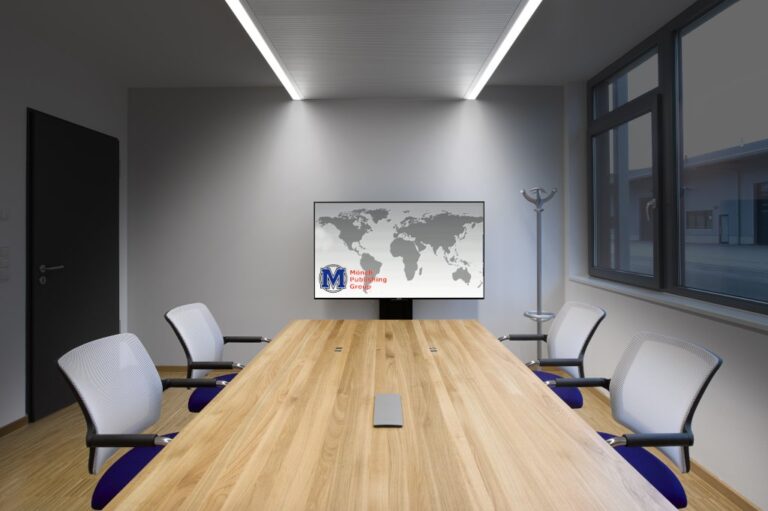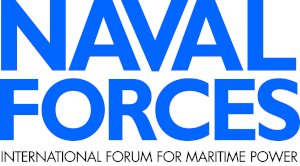25 YEARS of naval forces:
MESSAGE FROM THE PRESIDENT OF MÖNCH PUBLISHING GROUP, MANFRED SADLOWSKI, 2005
In 1980, Mönch Publishing Group already had established its position in the defence publications segment with several international journals in eight languages, with MILITARY TECHNOLOGY, NATO’S FIFTEEN NATION (with its original name), TECNOLOGIA MILITAR, AEROSPACE INTERNATIONAL, to list but a few. During the seventies, the growing influence of nations with access to the sea became obvious to everybody. A number of states, amongst them some that had only recently gained their sovereignty after the end of the colonisation period, were building up their Armed Forces in order to safeguard this newly acquired sovereignty. To this effect, naval forces continued to play a dominant role. We recognised that there was a real need for factual information on maritime matters, and for the participation in and fostering of the discussion of ensuing questions. To enable effectuation of this dialogue a new forum had to be established, a forum in the language of seafarers, in English. In deciding to do this we were well aware that most nations did have their ‘in-house’ publications in their own language, but (unlike in the air and land sector where international-oriented publications in English were in existence) no naval publication, written in English with a truly international flavour and covering the information spectrum of the seven seas, was in sight. This is how ‘NAVAL FORCES – International Forum for Maritime Power’ was ‘conceived’ 25 years ago.
With this aim in mind, from the very beginning topics such as naval concepts as part of overall national military concepts, or the discussion of threat scenarios – at the time not only dominated by the East-West conflict but also by emerging power centres in South-East Asia and Latin America, as well as by new conflict zones in the Middle East – became part of the editorial programme of NAVAL FORCES. Key discussions to be remembered included the extension of national economical zones of interest to 200 nautical miles and how to safeguard the resulting vast maritime areas. But also how to secure the sea lines of communication (SLOC) against a perceived threat by the world’s largest submarine fleet of all times, more than 300 Soviet submarines, nuclear or conventionally powered, with ballistic missiles targeted at the capitols or industrial mega centres and military power centres of the West, or with emerging cruise missiles carried by attack submarines permanently ‘marking’ the backbone of U.S. naval dominance, the U.S. Navy aircraft carriers.
NAVAL FORCES, FORUM FOR EMERGING NATIONS …
Another important part of the editorial concept had been to provide the new, emerging Navies with a forum to voice their perception and views, describing their future programmes. It was therefore not unintentional that the first edition of NAVAL FORCES was published on the occasion of the important international defence exhibition in Kuala Lumpur in Malaysia. Establishing the intended international flavour was in the early days hampered by the need to overcome scepticism by some Navies concerning their participation in an ‘open dialogue’ – viable contacts and an atmosphere of trust had to be established. But such hesitance was quickly alleviated when the first ‘name articles’ were contributed by Chiefs of Navies in Latin America, South East Asia and the Middle East in particular, discussing maritime policies, aspects of the International Law of the Sea, military pacts, and bi- and multilateral cooperation and treaties. It soon became evident that such articles were also seen as valuable contributions towards the emerging dialogue on confidence building and arms control measures in the eighties.
From the early days, articles in NAVAL FORCES were and still are characterised by factual discussion of the problems related to technical or technological points of view, including industrial aspects – and they gave answers to these problems. Soon also authors from well established Navies and industrial power nations used NAVAL FORCES to voice their views. I also remember well the complaint by a Central American Defence Minister about the intrusion into territorial waters by Asian trawlers, taking advantage of the inability of many Navies to effectively safeguard their territorial waters, resulting in drawbacks for the national economy of such countries. This showed that he was not only concerned about the notion of sovereignty and the lack of maritime measures to sanction such intruders. But this also led to an open discussion of operational questions concerning the deployment of maritime forces, the development of means for effective surveillance including the mutual use of satellites, and the sharing of knowledge and intelligence data with the political and military leadership of other nations, right through to proposing the exchange of operational concepts.
Such questions could only be answered in part by the Navies alone. Increasingly scientific organisations and industrial research and development sections tuned into these discussions, which greatly benefited from the expertise of researchers especially from technologically leading nations. Naturally, export-oriented national industrial complexes such as German naval industry, where highly motivated to participate in this open dialogue which often resulted in not only the sharing of information but also a common approach to solving the problem. The discussion by well reputed authors of topics covering all such naval aspects, from building surface and subsurface naval platforms and maritime aircraft as well as unmanned vehicles to take over some maritime operational tasks, through exchanging views on how to improve sensors and weapon systems, to novel approaches leading to more effective deployment of maritime forces under shrinking budgets and increasing manning problems, have become the trademark of NAVAL FORCES – you only have to scan this ‘Silver Jubilee’ edition under the headings of ‘Naval Technology” or ‘US Focus’, as this edition is targeted at Sea-Air-Space Navy League 2005 in Washington D.C., inter alia. We have therefore always included authors from international research institutes like the Dutch TNO, procurement agencies like the Swedish FMV, headquarters responsible for the development of concepts like the Naval Air Systems Command (NAVAIR). But our readers also benefited from industrial contributions which were not simply geared towards promoting their products but prepared to mostly discussing objectively ways of solving the many common problems ahead of us.
… WHILE RECOGNISING THE PARTICULAR ROLE OF THE US NAVY
Apart from being available to the ‘Third World’ (a term that has widely lost its meaning during these past 25 years) as a forum to voice their opinions, NAVAL FORCES always paid due attention to providing a platform for the most powerful Navy of the world, the U.S. Navy and its leading industrial base, a maritime industry that greatly influenced developments in other Navies. This has led to many, often repeatedly published Special Issues portraying U.S. Navy organisations like its Naval Sea Systems Command (NAVSEA), its Naval Surface Warfare Centre (NSWC) or Naval Underwater Warfare Centre (NUWC). And, NAVAL FORCES made use of having a North America Editor in-country, with close ties to the maritime services and naval industry. They provided insights with their editorials into budgetary, conceptual or policy developments inside the U.S. Department of Defense. With the growing importance of European maritime contributions it may be worth considering to establish a similar ‘anchor’ inside the EU, or?
The International Forum of Maritime Power – NAVAL FORCES benefited not only from the fact that the many naval programmes in the over 150 nations of the world with a Navy, involved a huge transfer of funds and know how in industry. We also benefited from the fact that increasingly such large programmes can only be realised in a multi-national framework with international cooperation. On the other hand, preponderance of U.S. ships in some parts of the oceans of the world and dominance in others resulted in a ‘buy American’ policy. It was this ‘field of tension’ that provided the constant impetus for the publisher and editorial staff of NAVAL FORCES to look for interesting and, more importantly timely contributions to an international debate – and this still today dictates expectations by our readership.
DID WE MEET OUR READERSHIP’S EXPECTATIONS?
A word concerning our readership: NAVAL FORCES, in strict adherence to a principle of the Mönch Publishing Group, has aimed at highest standards regarding editorial content, layout and paper and printing quality – as expected by our readers. In our concept we followed the principle that reading the magazine must not only be satisfactory from an intellectual but also an esthetical point of view. The editorial staff of NAVAL FORCES has been granted generous space for analyses, trend articles, surveys as well as the all-important news in the dossier part.
Also, in commonality with other magazines of the Mönch Publishing Group, NAVAL FORCES has initiated and is expanding a series of Special Issues under the heading: ‘The [X]-Navy: Today and Tomorrow’, in closest cooperation with the respective Navy (for comprehensive listing see page 16), partly in its third iteration already. Further, in close cooperation with the first crew of the respective ships and their superior commands, NAVAL FORCES published a series of ‘Ship Profiles’ (for comprehensive listing see page 18). And finally, together with the shipyards or commands concerned, NAVAL FORCES published Shipyard or Command Special Issues, some of them also in their third iteration (for comprehensive listing see page 14). Always an important feature of NAVAL FORCES has been to report on main naval and Tri-service Defence Exhibitions around the world, and to interview top management representatives of naval industry.
WHAT THE FUTURE HOPEFULLY HOLDS FOR OUR ‘GOLDEN JUBILEE’
A look into the future, towards the next 25 years of NAVAL FORCES, is perhaps opportune. We always have understood, and treated accordingly our readership not only as consumers, but as partners in a dialogue to satisfy readers’ expectations and to meet our aspiring goals. Together with you, our valued readers and customers, we have made NAVAL FORCES what it is today, a unique international forum for maritime power, as implied in its subtitle.
I hope that we will continue to enjoy the past and present atmosphere of mutual trust and respect that should be the fertilisation for a continued successful coverage of what interests our readers most. That you will remain the critical benchmark for continued measuring of the performance of NAVAL FORCES, assisting us in our endeavour to meet your expectations. And that we will stay ‘ahead of the game’, always to the point, actual and informative. To this end we invite your advice, with constructive proposals on how we can best enhance our product and eliminate existing deficits – enabling us to improve NAVAL FORCES further so that it remains the indispensable source and valued tool, sought by the leaders of more than 150 Navies of the world, the leaders of procurement organisations and naval industry in these countries.
Manfred Sadlowski
In his editorial for the very first edition of NAVAL FORCES, Editorial Director Vice Admiral (ret’d) Sir Ian McGeoch wrote: “The successful launch of a new ship is an event of much consequence in the lives of those who have invested in her, those who have designed and built her, and those who will man and operate her. Be she great or small, warship or merchant ship, fishing boat or ferry, so much concentrated skill and cooperative endeavour, resulting in so purposeful and visible an achievement, calls for celebration. The flags are out; the band plays; speeches are made and toasts drunk in an atmosphere of pride, goodwill and hopes for the future. The launch of a new journal has much in common with that of a ship. In the case of NAVAL FORCES, a Forum for Maritime Power, the parallel seems to be particularly apt; as with a ship, its success will depend upon the precision with which its purpose has been determined, and upon proof of its fitness for that purpose.”
While I leave it to our worldwide readership to judge by themselves if these expectations were met and promises kept during the past quarter of a century, I would like to take a look at how security policy environment changed over that period. But before this review let me say that I am honoured to have been the Editor-in-Chief of NAVAL FORCES since edition I/2001. I thank all previous Editors who have achieved the high standard of NAVAL FORCES which I could base my contribution on. Also, on behalf of our small team responsible for the content of our publication, Publisher Jan Wiedemann, Programme Manager Naval Affairs Hartmut Manseck, and North America Editor Gordon I. Peterson, I would like to take the opportunity to thank all those who are not in the same spotlight, despite their invaluable contributions: Our President and Chief Executive Director Manfred Sadlowski who ‘invented’ NAVAL FORCES 25 years ago and keeps a watchful eye on it – within the guidance issued he leaves us the necessary leeway to carefully adapt NAVAL FORCES to the changing environment while ensuring that its ‘corporate identity’ is being founded ‘Solidarnosc’, first free Union in Poland. Greece became the 10th member of the EC; the 52 U.S. hostages were freed after 444 days from the U.S. Embassy in Tehran; assassination attempts against President Reagan and Pope John Paul-II failed; Israeli aircraft destroyed the Iraqi nuclear reactor near Baghdad in a preemptive strike; Egyptian President Sadat was assassinated; the Soviets lost face when a submarine grounded in Swedish territorial waters; President General Jaruzelski imposed ‘martial law’ in Poland, Lech Walesa was arrested; Soviet chief ideologist Mikhail Suslov died. Argentina occupied the Falkland Islands but the islands were recaptured by a British Task Force after three months of fierce fighting; Spain became the 16th member of NATO; Israel returned the Sinai peninsula to Egypt; Soviet President Brezhnev died, followed by ex-KGB leader Yuri Andropov; arms control attempts (MBFR, START, INF) remained inconclusive. The U.S. deployed two U.S. carrier groups ‘as a warning to Cuba and Nicaragua’, leading to the outbreak of naval hostilities between Nicaragua and Honduras; President Andropov demanded effective economical reforms and called into question the validity of centralized market economy, so far an undisputed pillar of Communist ideology; a South Korean 747 airliner was shot down by Soviet air defence off the coast in Sakhalin; with the Montebello Decisions of the Nuclear Planning Group, Canada announced withdrawal of a further 1,400 warheads from Europe, bringing the total of such withdrawals since 1979 to 2,400; deliveries of GLCM components to the UK showed NATO’s determination to keep its ‘double track’ decision on theatre nuclear force modernisation and a complementary arms control effort viable; in Chile, of the 150,000 people arrested during the General Pinochet dictatorship, at least 10,000 died or disappeared; in Beinas well as Regional Directors, who all work with our customers all over the world; and last but not least I thank all those working completely behind the scene but essential for ensuring that everything runs smoothly in the house, be it preparing for defence exhibitions, managing our dispatch office, keeping track on us at the switchboard, or updating our databases – thank you, you are all part of the success story of the past 25 years of NAVAL FORCES. But now the look at what influenced the political and military affairs during the past 25 years:
Wolfgang Legien
Editor-in-Chief
Your are here:




Volker Schwichtenberg – CEO
Uta Schwichtenberg – CEO and Attorney-at-law
Christine-Demmer-Straße 7
53474 Bad Neuenahr-Ahrweiler, Germany
Phone: +49 2641 3703-0
Fax: +49 2641 3703-199
info@moench-group.com
